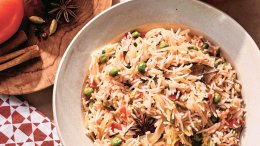In the wide world of food, whether you’re a trained chef, a home cook, or a culinary content connoisseur, it is very likely that at some point you’ve come across the term “mother sauce”.
And while we wouldn’t blame you if you incorrectly assumed that the term pays homage to one of the many incredible chefs throughout history who have also been mothers, the meaning of the term actually refers to the group of sauces from which all classical sauces derive.
There have been a few different classifications that date back to the 19th century, but the most common list we use today is attributed to French chef Auguste Escoffier’s 1903 publication Le Guide Culinaire, which broke the French mother sauces down to five: béchamel, velouté, espagnole, tomato, and hollandaise.
Although in depth explanations of each of mother sauce would likely require seperate Eat North Answers articles, here are the Coles notes: Four of the five sauces start out with a roux; equal parts fat (usually butter) and flour cooked over medium heat with liquid, which then boils, reduces, and thickens to become the base of the sauce, while hollandaise—the last addition to the mother sauces family—is achieved through the emulsification of egg yolk, clarified butter, and lemon juice.
Still not sure where to start? Check out this great video from acclaimed Canadian chef Christine Cushing on how to perfect the simplest of the five sauces, béchamel!













